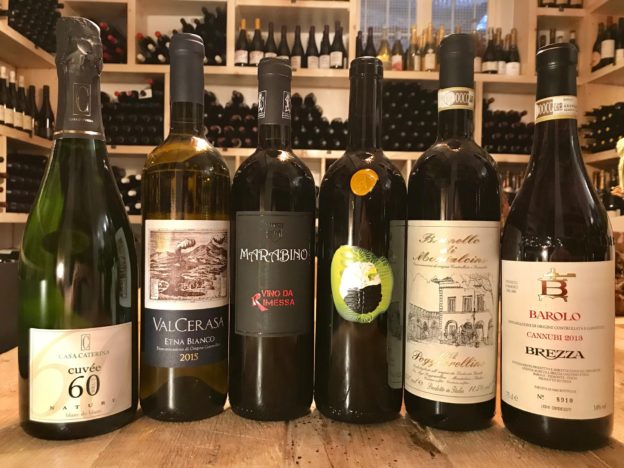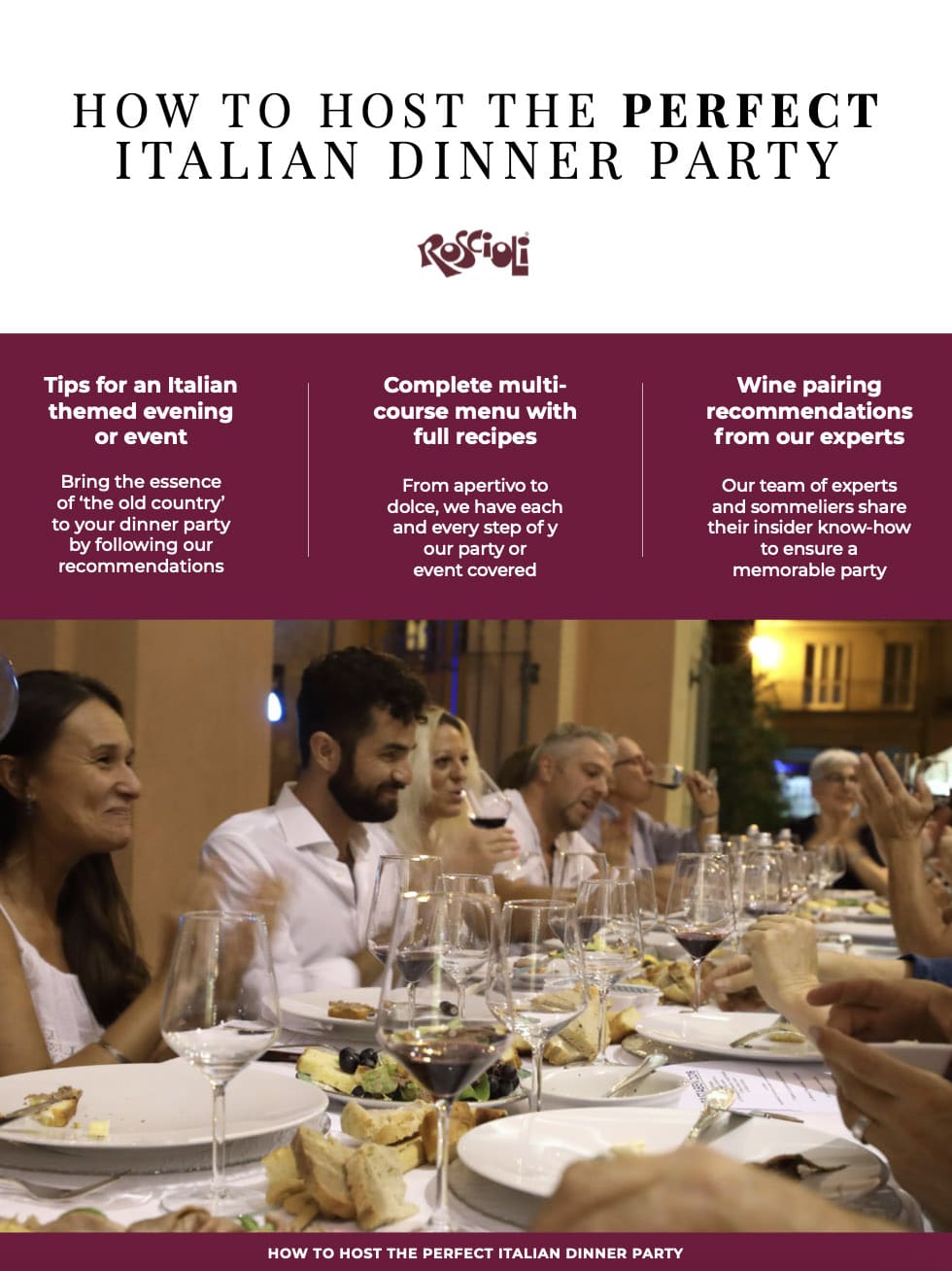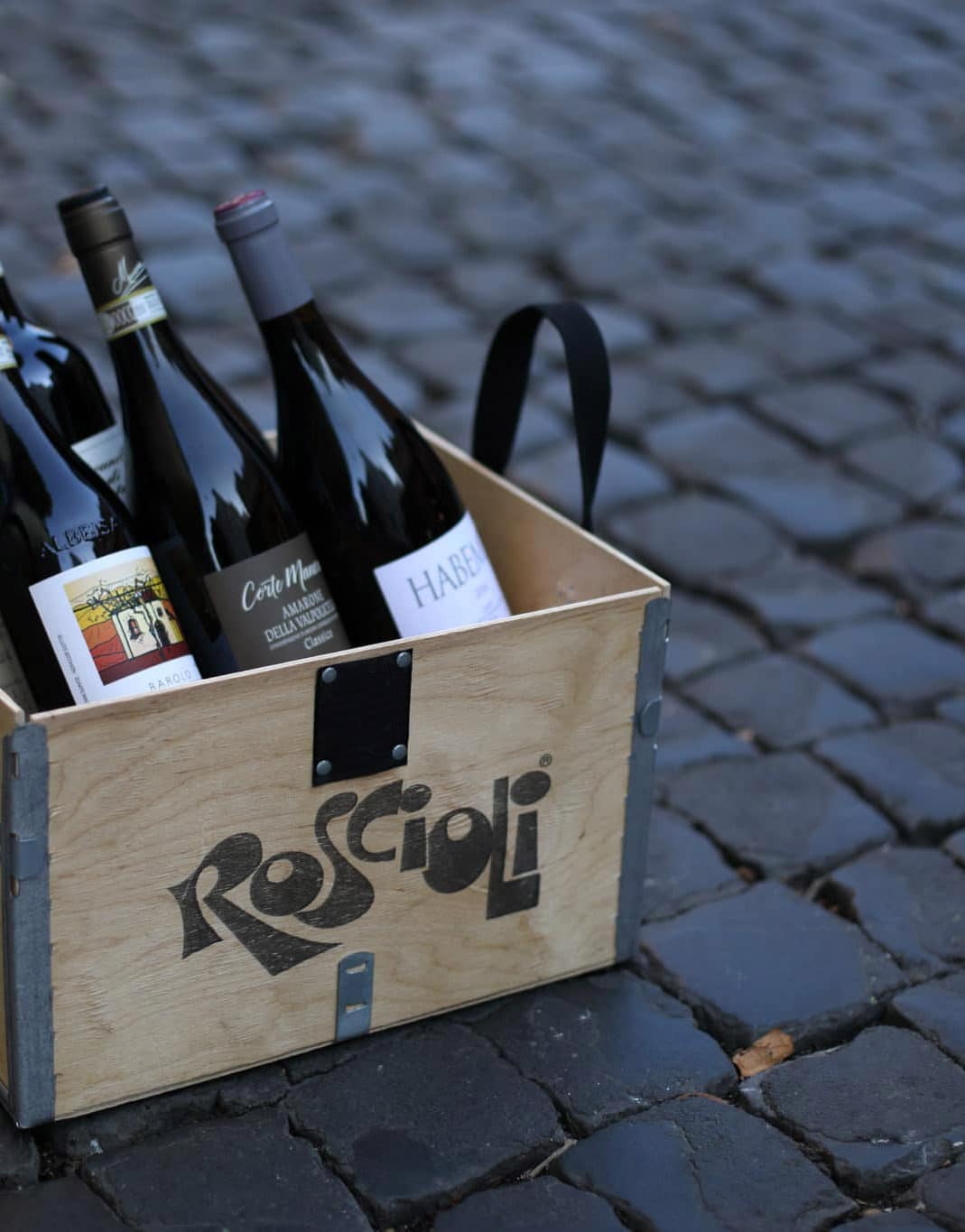SPUMANTE METODO CLASSICO NATURE '60', CASA CATERINA
Grape: 100% Chardonnay
Region: Franciacorta (LOMBARDIA)
Pairings: anything and everything...enjoy it with a nice dinner
Notes: Harvested and riddled by hand, 36 months of aging on lees
Drink by: now through 2022
Description:
THE 'DIALECT' WINE
How I wish you were all Italians, not because of our arrogance, nor because we have the worst political class in Europe, neither for the mafia or for the anarchic individualism that characterizes us, and certainly not even for our presumptions.
I would like you to be Italian to feel the nuance of the accent of Aurelio and Emilio del Bono. They speak an Italian that I would call rural, with an accent that tells them culturally and physically. Difficult to translate into another language: maybe Midwest if you are American, Cockney if you are Londoners, Argot if you are French.
In short, their cadence is one with their wines and one day I will write a guide about the dialects and wines of Italy.
Because perhaps this is the secret, it is through the declinations of the Logos (or Koine) that the untranslatable Terroir is defined.
In short, tell me how you speak and I will tell you what wine you produce.
To explain where we are, we're speaking of Brescia, 100km east of Milan, the road to Venice to be exact. Soft, pre-Alpine hills are home to a community that was rural up to 40 years ago and today is one of the most prolific industrial sectors in Europe. The Brescian is of few words and of a tireless activity. Rude, direct, guttural, earthy.
That type of peasant who suffered the Austrians, the French, the Milanese, the Germans, but remained anchored to his land. The Brescians are hard and tough as ancient oaks, and don't budge for anything.
In this way, Aurelio says that he does the bubbles with natural fermentation, without adding yeasts, with a perfect ripening of the grapes, unlike many of his colleagues who own Brescia are not doing and who prefer to harvest early to have a raw grape but with a high acidity. If you do not understand what I'm talking about here is a video that explains it:
Watch the video HERE
All that Giovanni Arcari knows (see video above) he owes to Fratelli del Bono.
At the end of the eighties these two rough peasants already spoke of natural fermentation when barriques, designer enologists and selected yeasts were discussed all over the world.
And it is not that the Del Bonos anticipated the times, simply they stopped time, firmly anchored to their traditions.
Because it is these accents on these cadences that defines the rustic elegance of those wines capable of being on the border between tradition and modernity, between Italian and dialect.
The 36-month Cuvee is fresh and ripe at the same time, but the descriptive notes you'll have to find them yourselves, because if you ask the del Bono's, they'll respond with an insult. I call it the only Italian sparkling that does not make me regret not having opened a Champagne.
The 60-month is more mature, deliberately oxidized. You can hear the passage of time, with notes of honey and yeast.
Match them with a meal, as this is not an aperitive wine.
ETNA BIANCO 2015, VAL CERASA
Grape: 100% Carricante
Region: Etna (SICILIA)
Pairings: shellfish, king crab, swordfish, ceviche, and pesto
Notes: volcanic soil, 850m above the sea, indigenous yeasts, part of fermentation done with skins, stainless steel, total production 30.000 bottles (including reds)
Drink by: now until 2022
Description:
Only for that sentence:
'The world of wine is 99% bullshit and this is followed by 99% of people who believe in it'
To say: you convinced me.
The truth is that you are drinking a wine of that 1%.
About Etna, everything has been said. I can tell you that Etna Bianco from Val Cerasa is one of the greatest whites I've ever drank, period. In the sense of pure volcano, of brilliant gold color, incense, myrrh (the what?), smoke, tobacco and saffron. To drink at on the verge of an eruption, contemplating a sunset of fire on the slopes of Mount Etna.
Then there is the history of the centenary vines, and of the cultivation in the Alberello (bush) method, and of the balsamic winds....whatever, if you want me to speak the bull**its of the other 99%, but I advise leaving it to be. Prepare a smoked mackerel and forget that barbecued hamburger and replace it with that slice of Canadian salmon. Then wait for the wine to flow, like a lava flow, from the bottle into the glass and between your burning senses. And at every sip, or eruption, let it flow...wine, time, pleasure.
VINA DA RIMESSA, MARABINO
Grape: Technically illegal to say (but Giacche and Parigina)
Region: Noto (SICILIA)
Pairings: all the wild flavors of Sicily, tuna steaks, caponata siciliana, spicy meats
Drink by: now through 2022
Notes: bio-dynamically farmed, unregistered grapes
Description: Dedicated to my son...
'Ogni scarrafone è bello a mamma soia" - A mother of a beetle finds her son beautiful'
Neapolitan proverb.
Which literally means that it does not matter how bad you are but your mom will love you anyway.
Or ... if I've never made wine it's because I've always thought it would be much easier to drink it, and desperately judge it.
Perhaps waiting for that opportunity in which I could put my desires at risk without actually risking anything. In short, the ideal situation.
The opportunity presented itself a few years ago, walking among the vineyards of Pierpaolo. I asked, walking on the hill of Marabino what were those slightly different plants. He tells me that maybe they are two hybrid vines of northern Italy, Giacche and Parigina, but he is not convinced. What are you doing? I asked him. I don't know, there are too few plants to do anything, Maximum 300-400 bottles. So I offer him a collaboration: I remove the whim of playing the vigneron and he does all the rest. My idea, I tell him: let's make a wine, I'll buy all the production in advance, and whatever happens, happens. I liked the idea of recovering two unknown vines, in extinction, in such a well-known territory.
Giacche, but above all Parigini hybrids are related to the American vines. A lot of fruit, body, perhaps little personality, but this land is magical, if it has ennobled the Nero d'Avola and the Muscatedda, who knows what's possible.
So three years later I go back to the cellar with Lindsay, and hell, I think the wine is a bomb. Fruit, strawberry, cherry and a Nordic freshness on the finish. A bipartisan wine, able to satisfy the most simple palate and bribe the most sophisticated palates.
Two months ago, the first bottles arrived in Rome and, upon opening the cartons, I saw my label, Vino da Rimessa. An emotion. I finally feel part of a world from which I've always felt detached. There was always a filter, a membrane, that of judgment. Now, I'm part of the game.
I open it and immediately feel enveloped by the warmth of the sun, the softness of the fruit. The first taste has the same sweet and lactic taste of the skin of my newborn son. A solar and Mediterranean embrace then leaves the space to an unprecedented, Nordic, austere freshness. The licorice notes here dance with the soft softness of a strawberry jam and then raspberries and oranges and pomegranates and all the red and orange fruits you want. It's a dip in a pool of flavors of the south, in a rustic villa overlooking the sea, on a holiday playing with the great love of my life, my son.
Combine it with your best memories, the moments that are only experienced and not described, but above all allow yourself the pleasure of simple things and leave all those grim and pretentious thoughts out of the glass, that desire to see the result of your aspirations in others, in short your children for who they are and not for what you would like them to be.

BRUNELLO DI MONTALCINO 2013, POGGIARELLINO
Grape: 100% Sangiovese Grosso
Region: Montalcino (TOSCANA)
Pairings: a nice Florentine steak, quality cured meats, wild and red meats
Drink by: now through 2026
Notes: large Slovenian oak, non-filtered
Description: I'm not going to tell you a story...
The suspension of judgment - Epoche - according to the ancient Greeks was the basis of true knowledge.
And so a Zen story talks about the professor who wants to know Buddhism and goes to a hermit who pours him a cup of tea and continues to pour until it spills out of the cup and the professor says: what are you doing?
And the hermit laughs: How can you know if you do not first empty your cup of preconceived and preconceived knowledge.
And more times we have said how often children are capable of the most daring and relevant descriptions in judging a wine.
And we have also reported studies of neurology that confirmed the fact that between Logos - word/story - and wine there was an unbridgeable neuronal distance due to the simple fact that the palate and taste and smell are primordial and instinctive, geographically distant from the side of the brain that develops language.
And finally, there are times that one would like to remain silent and let the wine, in its evocative power, ancestral and tribal, speak for itself, of senses and not of sense, through emotions and suggestions rather than scores and descriptions.
So speaking with Anna and Lodovico there are no clear statements, stories about their land, the history and the taste that make the world of wine the most lied about market in the world.
Lodovico says he does not go to the fairs because he is shy. Anna argues with the keys of the gate and takes her with her husband who would like to expand the cellar: but where do you want to go at 82? he says to her.
Then he speaks of the regret of having to abandon his business upon reaching limits of age without anyone in the family who wants to take it (and we immediately say 'we'll take it over' - part joking, part serious)
In short, the story of two simple Tuscan people, without particular stories, who shy away from the silly circus of storytelling about false terroirs and false traditions. Two humble and beautiful people who make a wonderful wine, surrounded by woods, facing the Montosoli Hill, the only true area of Montalcino. The rest, in the valley, are thousands of hectares of commercial fruit and built up stories of a wine that has become too famous too quickly, just a label without substance.
To combine with silence, pleasure, and those rare moments when we can simply enjoy something without judging it.
PINOT NERO 'ORIGINALDO' 2013, FAUSTO ANDI
Grape: Pinot nero
Region: Oltrepo Pavese (LOMBARDIA)
Pairings: venison, glazed duck, and pork dishes
Notes: bio-dynamically produced, not filtered or fined, indigenous yeasts
Drink by: now through 2023
Description: No, we are not in Tuscany...
To get there just go to the south of Milan for about 85 km. You will find yourself in the middle of beautiful hills, you will seem to be in Tuscany with the advantage of not having Tuscans around, and especially not have their sweetened, counterfeit wines, built for tourism and the palate of corrupt journalists.
Fortunately, no one really cares about Oltrepo, except for some rare and passionate admirers. Here we make wines from Uva Rara, Croatina, Moradella, Barbera. I'm not going to explain what is in each because some of these grapes they don't even know. But I can tell you that among these vineyards a farmer is working and puts you in peace with the world.
Fausto Andi tells a story of 6 generations of land and vineyards through technical descriptions for initiates, so you will not understand everything about his speech, but basically what it means is that there is only one way to make wine and it is by respecting the plant and its unique and inimitable relationship with the soil and the climate it belongs to. The vigneron is a custodian of territorial uniqueness.
Without rhetoric Fausto tells his wine not as if he were the father, but a midwife. Everything is in accompanying the fruit at birth, he says.
I would try to describe the wine, but what is the use? I could speak of an almost sweet fruit and then a unique soft winding that turns to finish of a balsamic, mineral freshness, with notes of violet and licorice ... seems ridiculous? Or At least out of place? Come on, put these post-wine-snob descriptions next to Fausto and you'll notice that something is screaming. How to go dressed in tights at a country fair, or with a mask and fin at a Wall Street session.
The point is that the Andi family has been studying organic farming for more than 100 years, before the fashion of wood, winemakers, wine and natural fermentation arrived.
To be combined with fatty meats and a country house, far from suspicious noises, but not those of the maison.
For another video on Fausto Andi (subtitles coming momentarily)
BAROLO CRU CANNUBI 2014, BREZZA
Grape: 100% Nebbiolo
Region: Barolo (PIEMONTE) from prestigious cru Cannubi
Pairings: wild game, red meat, aged cheeses like Parmigiano Reggiano
Drink by: now until 2030
Notes: 9,000 bottles produced, 24 months in traditional Slovenian oak and 12 in bottle, indigenous yeasts
Description: Well, I had never understood how to taste a wine through a sound. Yes, really, when it makes that sound on your palate at 0:40. Ciack. Ciack, is it not beautiful, to hear that noise, with that gesture of the hands? Then what do you say?
'The credibility of pleasure'
A phrase from the encyclopedia of taste. Credible pleasure is a perfect synthesis of the sense of taste.
And it 's true, Barolo is the wine of dawn, because it is the only wine that dries and enriches the palate, leaving you always in an intermediate zone between heat and tannin that brings you to drink it and redrink it, until dawn precisely.
The Brezzas, if you want to know, have been making wine for 120 years in Barolo.
A terrace overlooking Cannubi, perhaps the oldest and most famous vineyard in Italy and no concession to passing fashions. Large barrels, long refinements, elegant, balsamic wines, fine but structured that dry the palate, ciack. These wines beg for an aged cheese, a slice of cured meat, bread, water and another sip. Repeat the process over and over until the sun rises.
How to Host the Perfect Italian Dinner Party
Bring Italy to you with our free guide to planning and hosting the perfect Italian dinner party!
Find recipes, wine paring recommendations and other tips for a memorable evening, all curated by our team of experts - download today here:
 SEI IN ITALIA? CLICCA QUI
SEI IN ITALIA? CLICCA QUI 



